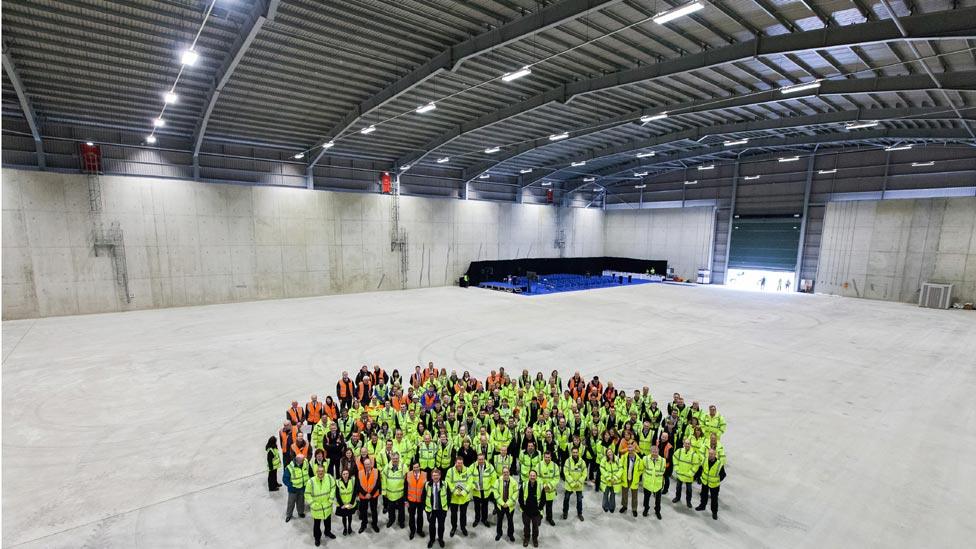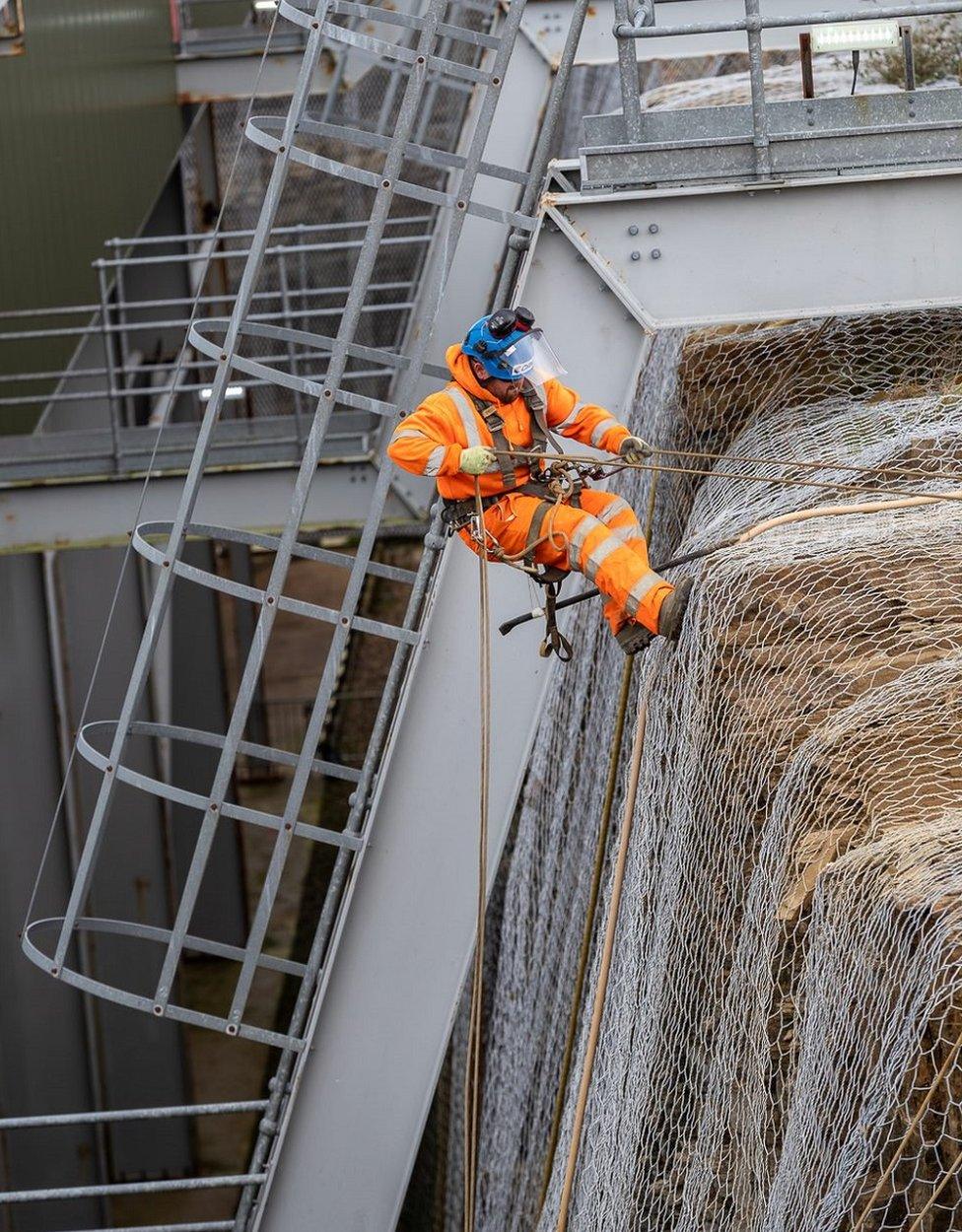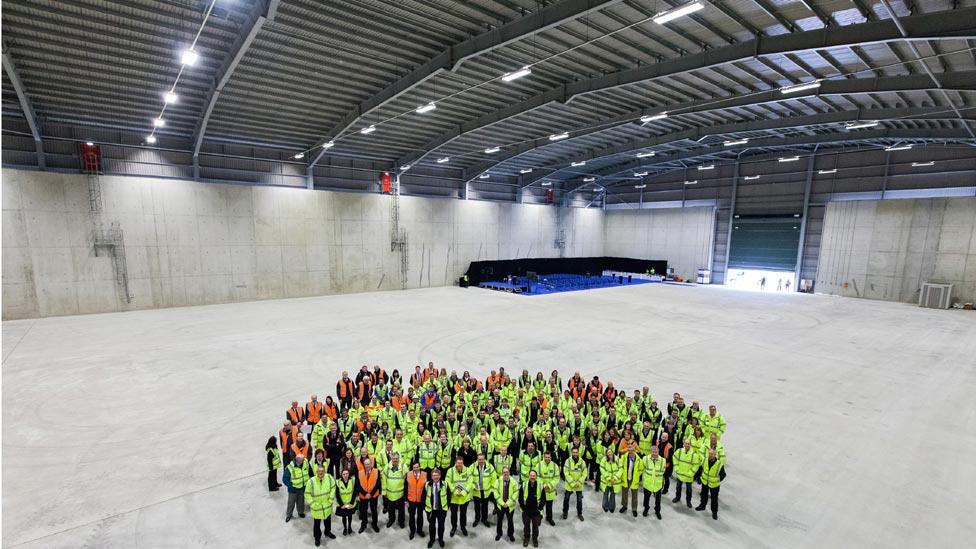Rope work at Dounreay radioactive waste vaults
- Published

Dounreay staff inside one of the first two vaults following completion in 2014
Rope access specialists have carried out safety work at two vaults where tonnes of radioactive waste will be stored for hundreds of years.
The facilities at Dounreay were built below ground to hold what is classed as low level waste.
The rubbish includes soil and rubble from the demolition of buildings at Dounreay, and also polythene sheets, plastic gloves and paper from the site.
The specialists worked on the 20m (66ft) rock faces around the vaults.
The Dounreay nuclear power complex, near Thurso in Caithness, is being decommissioned.
The waste vaults were constructed next to the site.
Contractor CAN Geotechnical and geotechnical designer Golder Associates (UK) Ltd were brought in to repair netting, which catches any loose rocks, and install addition bolts to help keep the rock faces stable.
The specialists also did rescue training, practising the recovery of an injured worker from the bottom of a rock face.
The rock walls are outside the reinforced concrete walls of the waste stores.

A rope specialist abseils down a rock face outside the walls of a waste vault

Dounreay's operators have planning permission for six low level radioactive waste vaults with a total capacity of 175,000 cubic metres.
Two were completed between 2011 and 2014. Each can hold the equivalent of between 370 and 450 double decker buses.
The next phase of construction could start between this year and 2026.
The vaults have been designed to store waste, which is held in containers filled with cement-based grout, for hundreds of years.
Dounreay said after 300 years, about 90% of the total radioactivity initially disposed of in the stores will have decayed.
It said the average radioactivity of the remaining material would be comparable to that currently found naturally in soils around Dounreay.
The facilities are expected to take thousands of years to "slowly degrade".
Related topics
- Published20 August 2020

- Published19 May 2015

- Published24 June 2014
